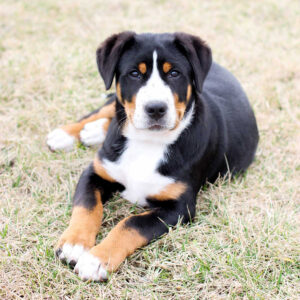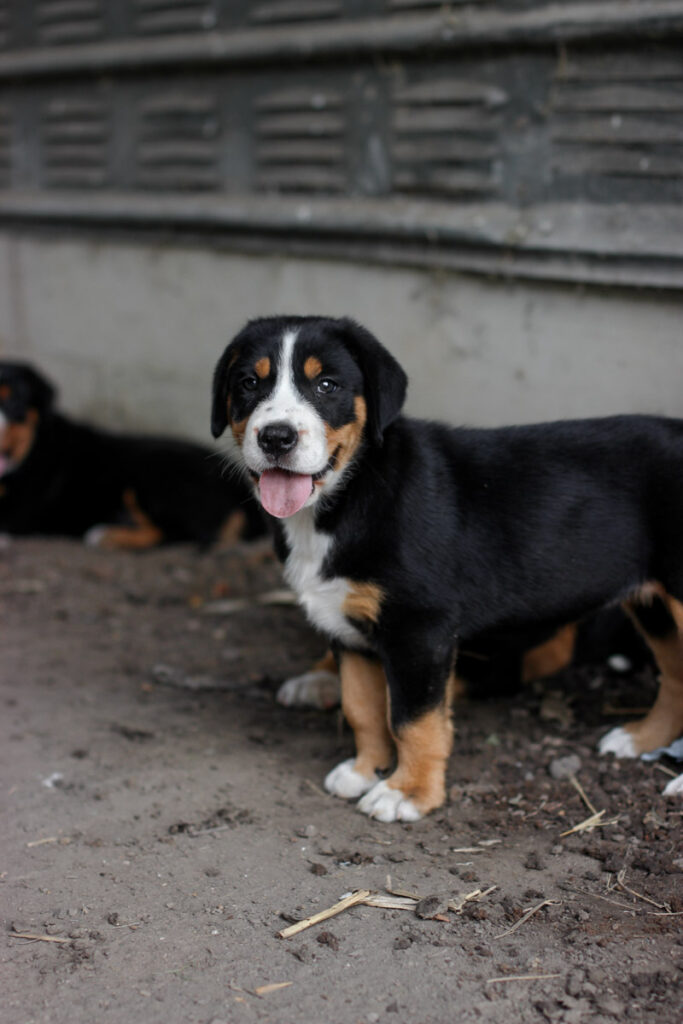
ABOUT GREATER SWISS MOUNTAIN DOGS
Greater Swiss Mountain Dogs are a purebred breed that originated out of the Swiss Alps. To us, they are the ideal family dog. They are good-natured, self-confident, devoted, alert, protective, sociable, active, and dignified, and they love to be a part of a family. They are super kid-friendly despite their large size, playful and fun-loving, obedient, and incredibly handsome.
AKC describes them as “immensely strong, yet agile enough to move a flock across the sloping foot of a mountain. The coat is a striking tricolor—black, red, and white. The head and muzzle typically have a white marking (the “blaze”), setting off a sweet expression. Several big mountain-dog breeds are described as “majestic,” but Swissies practically invented the word.”
GENERAL APPEARANCE
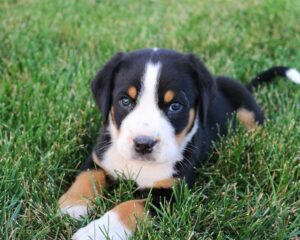
The Greater Swiss Mountain Dog is a Draft and Drover breed and should structurally appear as such. It is a striking, tri-colored, large, powerful, confident dog of sturdy appearance. It is a heavy boned and well muscled dog which, in spite of its size and weight, is agile enough to perform the all-purpose farm duties of the mountainous regions of its origin.
EXERCISE
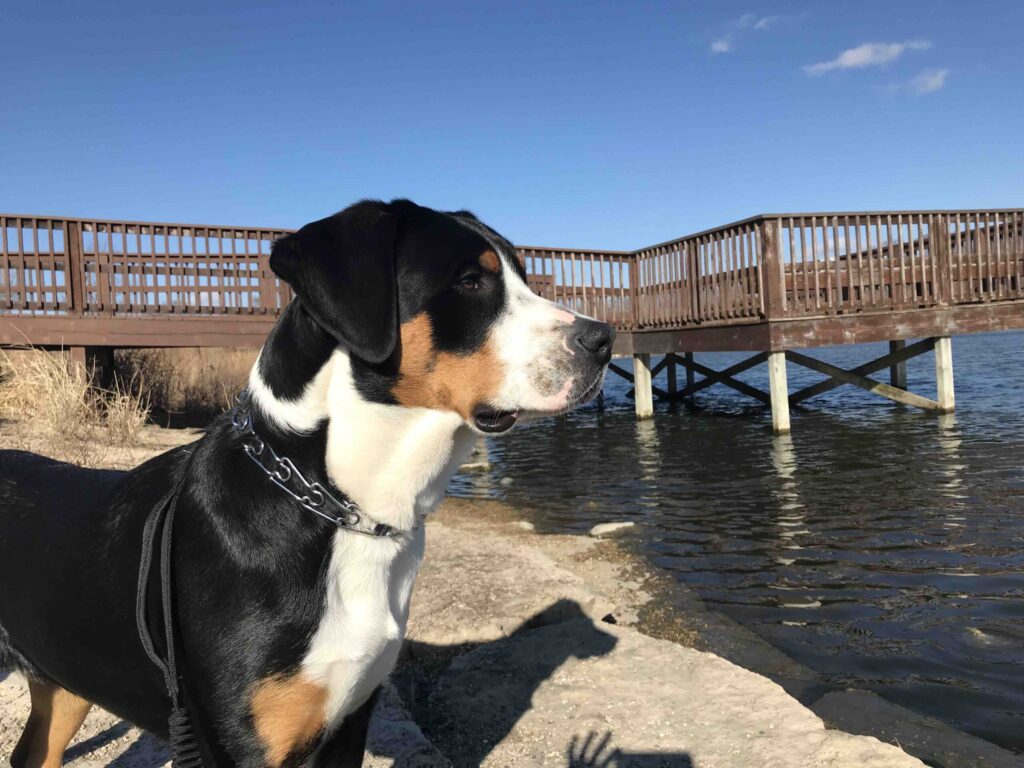
The Greater Swiss Mountain Dog requires moderate exercise. A walk around the block or a romp in the woods generally will satisfy their daily exercise needs. This breed is much better suited for the person looking for a hiking companion than the person wanting a bicycling or marathon-running partner.
TRAINING
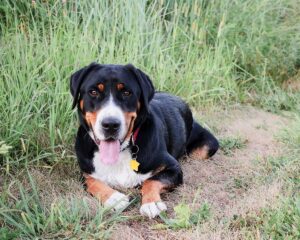
The GSMD is very food motivated and responds well to training using food rewards. They can also have a stubborn streak, however, so their owners must be more determined than they are. They are a draft breed, so the use of a harness (other than for draft work) just tends to make them pull that much harder. Early socialization and puppy training classes are always recommended.
HEALTH
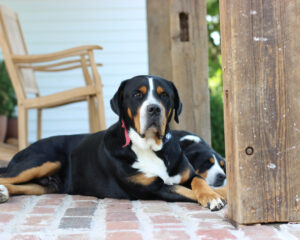
Overall Swissies tend to be a very healthy breed. They do not have any breed-specific disorders but can have health problems that affect large-breed dogs, including orthopedic issues, splenic torsion, and epilepsy. To learn more about GSMD health, please visit the GSMD Club of America website.
WEIGHT
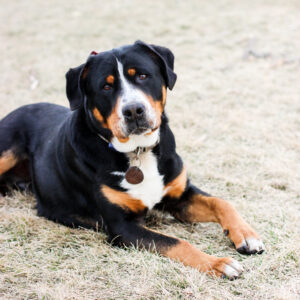
There is no standard weight for Greater Swiss Mountain Dogs, but males tend to range from 100-140 lbs, while females tend to range from 85-110 lbs. Diet and exercise play a big role in size.
NUTRITION
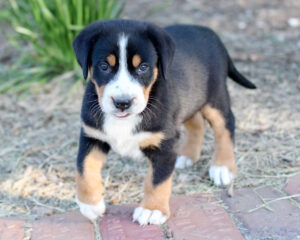
The Greater Swiss Mountain Dog can thrive on many types of diet, from kibble to raw to a combination of both. The most serious issue with feeding the GSMD is overfeeding, which leads to many digestive problems, including loose stools, and also leads to obesity, which is one of the greatest health problems in the breed.
GROOMING
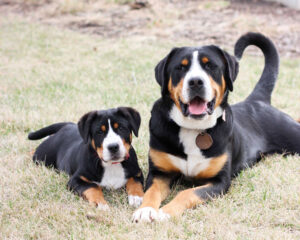
Swissies are basically a “wash and wear” breed, but they are double coated and do shed, usually twice a year. When this is occurring they benefit from a good bath, followed by a thorough brushing. For the rest of the year the occasional bath and brushing usually does the trick. They need regular nail-trims, and ear and teeth cleaning.
FUN FACT
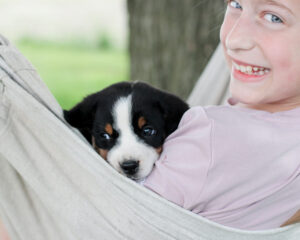
The Greater Swiss Mountain Dog was introduced in the United States when J. Frederick and Patricia Hoffman saw the breed at a show in Frankfurt, Germany, in 1967. The following year the Hoffmans, along with Perrin G. Rademacher, imported the first Swissy into this country.
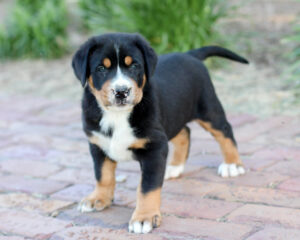
HISTORY
Swissies descend from war dogs brought over the Alps by Julius Caesar’s legions. The Swiss utilized these mastiff-types when breeding their Alpine mountain dogs, or Sennenhund. Of these, Swissies are the oldest and the largest (or, the “greater”).
In remote mountain passes they toiled as all-around farm-and-pasture hands, specializing in hauling loads of meat and dairy to market in smartly outfitted dogcarts. The Greater Swiss is closely related to the Bernese Mountain Dog and is a component breed of the Saint Bernard and Rottweiler.
MOST BREED INFORMATION IS DIRECTLY SOURCED FROM THE AKC WEBSITE.

